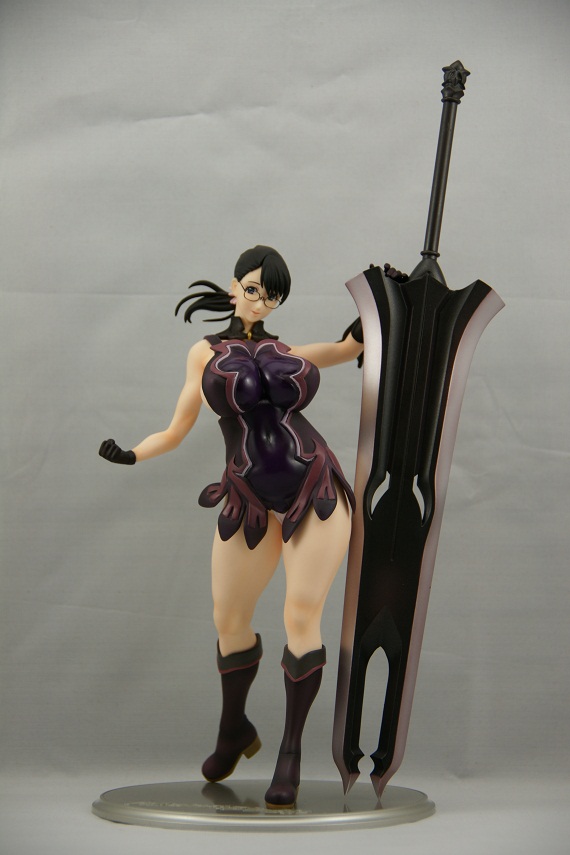基本介紹
巨人之劍——遠古傳來的巨大武器
所有者:貝奧武夫
時 代:中世紀歐洲
地 域:北歐
出 典:《Beowulf》
與西格魯特齊名的北歐英雄貝奧武夫是傳說中擊敗怪物格蘭戴爾和他的母親海底魔王巨龍的王者,在關於他的故事中登場的武器里,最具特色的應該說是那柄擊倒海魔王的巨人之劍。
基本信息
《
貝奧武夫》(Beowulf) 根據發音,我們譯為:貝奧武夫。其實,它有兩種意思:第一,Beo,是北歐單詞的簡寫,因此,可翻譯為:北歐之狼。第二,Beo,是“熊”的發音簡寫,寓意:像熊一樣強壯以及像狼一樣勇猛的男人。《貝奧武夫》它體現的是英雄敘事長詩,完成於公元九世紀。 全詩長3183行,以
斯堪的納維亞(Scandinavia)的英雄貝奧武夫(Beowulf)的英勇事跡構成主要內容。雖然歷史上並未證實確有貝奧武夫其人,但詩中所提及的許多其他人物與事跡卻得到印證。 本詩以西撒克斯(Wessex)方言寫成,押頭韻而不押尾韻,用雙字隱喻而不用明喻。是現存古
英語文學中最古老的作品,也是歐洲最早的方言史詩。在語言學方面也是相當珍貴的文獻。
《貝奧武夫》(Beowulf),一譯貝奧武甫,完成於西元八世紀,約750年左右的英雄敘事長詩,長達3000行。故事的舞台位於北歐的
斯堪的納維亞半島。是以古英語記載的傳說中最古老的一篇,在語言學方面也是相當珍貴的文獻。 貝奧武夫(Beowulf)乃現存古英文文學中最偉大之作,也是歐洲最早的方言史詩。該詩中並未提及英國,但學者相信該詩約於西元七二五年左右在英國完成。
全詩凡三千一百八十二行,以斯堪地那維亞的英雄貝奧武夫的英勇事跡構成主要內容。雖然歷史上並未證實確有貝奧武夫其人,但詩中所提及的許多其他人物與事跡卻得到印證。 本詩原以西撒克遜方言寫成,押頭韻而不押尾韻,用雙字隱喻而不用明喻。全詩內容分為兩部分: 第一部分描敘丹麥霍格國王(King Hrothgurs)宏偉的宮殿,在前後十二年中,半人半魔的妖怪格蘭戴(Grendel)每晚出沒捉食霍格的戰士。此時恰巧瑞典南部濟茲(Geats)王子貝奧武夫率家臣來訪,協助除害。國王當晚設宴款待,熟料妖怪格蘭戴又復出現,捉食一名濟茲戰士,貝奧武夫與之格鬥,貝氏扭斷其臂,妖怪落荒而逃,因受重傷致死。第二天晚上,格蘭戴的母親前來為其子復仇,其後貝氏把她在一湖泊的洞穴中殺死。 第二部分描敘貝奧武夫返國,被擁為王,前後五十年,舉國大治。最後貝奧武夫以垂老之年,殺一噴火巨龍,但其個人亦因而身受重創,終於身死。詩末敘其葬禮,並有輓歌。
詩歌節選
I Now Beowulf bode in the burg of the Scyldings, leader beloved, and long he ruled in fame with all folk, since his father had gone away from the world, till awoke an heir, haughty Healfdene, who held through life, sage and sturdy, the Scyldings glad. Then, one after one, there woke to him, to the chieftain of clansmen, children four: Heorogar, then Hrothgar, then Halga brave; and I heard that -- was --'s queen, the Heathoscylfing's helpmate dear. To Hrothgar was given such glory of war, such honor of combat, that all his kin obeyed him gladly till great grew his band of youthful comrades. It came in his mind to bid his henchmen a hall uprear, a master mead-house, mightier far than ever was seen by the sons of earth, and within it, then, to old and young he would all allot that the Lord had sent him, save only the land and the lives of his men. Wide, I heard, was the work commanded, for many a tribe this mid-earth round, to fashion the folkstead. It fell, as he ordered, in rapid achievement that ready it stood there, of halls the noblest: Heorot [1] he named it whose message had might in many a land. Not reckless of promise, the rings he dealt, treasure at banquet: there towered the hall, high, gabled wide, the hot surge waiting of furious flame. [2] Nor far was that day when father and son-in-law stood in feud for warfare and hatred that woke again. [3] With envy and anger an evil spirit endured the dole in his dark abode, that he heard each day the din of revel high in the hall: there harps rang out, clear song of the singer. He sang who knew [4] tales of the early time of man, how the Almighty made the earth, fairest fields enfolded by water, set, triumphant, sun and moon for a light to lighten the land-dwellers, and braided bright the breast of earth with limbs and leaves, made life for all of mortal beings that breathe and move. So lived the clansmen in cheer and revel a winsome life, till one began to fashion evils, that field of hell. Grendel this monster grim was called, march-riever [5] mighty, in moorland living, in fen and fastness; fief of the giants the hapless wight a while had kept since the Creator his exile doomed. On kin of Cain was the killing avenged by sovran God for slaughtered Abel. Ill fared his feud, [6] and far was he driven, for the slaughter's sake, from sight of men. Of Cain awoke all that woful breed, Etins [7] and elves and evil-spirits, as well as the giants that warred with God weary while: but their wage was paid them! [1] That is, "The Hart," or "Stag," so called from decorations in the gables that resembled the antlers of a deer. This hall has been carefully described in a pamphlet by Heyne. The building was rectangular, with opposite doors -- mainly west and east -- and a hearth in the middle of the single room. A row of pillars down each side, at some distance from the walls, made a space which was raised a little above the main floor, and was furnished with two rows of seats. On one side, usually south, was the high-seat midway between the doors. Opposite this, on the other raised space, was another seat of honor. At the banquet soon to be described, Hrothgar sat in the south or chief high-seat, and Beowulf opposite to him. The scene for a flying (see below, v.499) was thus very effectively set. Planks on trestles -- the "board" of later English literature -- formed the tables just in front of the long rows of seats, and were taken away after banquets, when the retainers were ready to stretch themselves out for sleep on the benches. [2] Fire was the usual end of these halls. See v. 781 below. One thinks of the splendid scene at the end of the Nibelungen, of the Nialssaga, of Saxo's story of Amlethus, and many a less famous instance.
英雄貝奧武夫
英雄傳說
《Beowulf》是八世紀在英國出現的英雄傳說。故事用英語寫成,傳說的舞台是丹麥和挪威等北歐地區。和大多數德意志及北歐傳說相同,《Beowulf》中也有各種各樣的名劍登場。
貝奧武夫是居住在瑞典南部的伊阿特族勇士埃吉塞沃的兒子,身形魁梧,力量巨大,他繼承了父親的勇猛,很小時就活躍在戰場上。
有一天,貝奧武夫得知在遠方的丹麥有一個叫格蘭戴爾的魔物出現,襲擊弗羅斯卡的宮殿。為了擊退魔物,貝奧魯夫率領十五名部下出發去丹麥。
格蘭戴爾是在聖經中有殺弟罪名的該隱的後裔,身體巨大,擁有神秘的力量,皮膚堅硬,普通的刀槍根本無法傷到他。貝奧武夫向對手挑戰,並約定如果對方空手作戰,那么自己也不使用武器。激烈的戰鬥展開了,貝奧武夫的部下用長劍和槍弓等幫助他作戰,但是根本無法給格蘭戴爾造成傷害。最後,貝奧武夫終於切下了格蘭戴爾的一隻手。失去手腕的格蘭戴爾逃走了,貝奧武夫把他的手腕裝飾在宮廷的牆壁上。
這時回到住處的格蘭戴爾因為手腕出血太多而死去,他的母親憤怒了,作為海底魔物的她為了奪回兒子的手腕,來到貝奧武夫的宮殿向他復仇。
這個海底魔物比格蘭
戴爾更大,雙手裝有類似長劍的鉤爪。怪物殺死了宮廷的看門人,將裝飾在牆壁上的格蘭戴爾的手臂奪走。
為此,貝奧魯夫再次來到丹麥,他從弗羅斯卡國王那裡借來了名劍FRUNTING,只身前往魔物的住處。
雙方在魔物的住處展開激戰。由於對手有著比格蘭戴爾更堅硬的皮膚,即使是名劍FRUNTING也無法傷害到她,反而是貝奧魯夫被魔物用鉤爪抓傷了身體。
正在無可奈何之際,貝奧武夫找到了從格蘭戴爾寶山上獲得的一柄巨大的長劍。這是一柄非常大的重劍,普通的戰士根本無法舉起,一看就不是為人類鍛造的武器。
於是,貝奧魯夫手持這柄利劍再度挑戰對手,結果憑藉此劍強大的威力,乾淨利落地斬下了魔物的頭顱。貝奧魯夫又將以前因傷而死的格蘭戴爾的頭顱斬下,把他作為戰利品帶回了弗羅斯卡國王的住處。
但是斬傷魔物的寶劍因為劍刃吸收了魔物的血而溶化,只剩下黃金的劍柄。擊倒了格蘭戴爾和其母親的貝奧魯夫成了最為著名的英雄,此後他仍不斷地進行著冒險。最後在一場與龍的戰鬥中,他因染上毒液而不幸身亡。
鮮血帶來的光榮不會久長
擊倒格蘭戴爾的母親海底魔王的那把劍並不是給人類鍛造的。它是在《聖經·創世記》中描繪的被洪水滅亡、叛逆神靈的巨人族的武器,是一柄全長超過兩米的令人恐怖的重劍。據說貝奧武夫身材非常的高大,所以恐怕也只有他才能使用此劍。
劍刃由鋼鐵製成,劍身有美麗的紋路,因為在劍身里溶入了各種金屬而使其變得非常的堅硬。據說,這種刀劍的製法在現代萊茵河畔的手工作坊里仍在使用。
另外,此劍在黃金造就的刀柄上裝有大量的寶石,劍柄的末端是環形,在環上還裝飾有蛇的造型。
由妖精和矮人鍛造的寶劍在凱爾特及日耳曼民族的傳說中曾多次登場,但是為巨人而造的巨大寶劍卻非常少,而本傳說中提到的巨人之劍也因魔物的血液而溶化了,這種悲劇性的結局非常出人意料。
這柄劍純粹是為戰鬥而誕生,又因戰鬥而消亡的。從另一個角度來講,它也暗示了像貝奧魯夫這一類英雄人物的命運,由鮮血而帶來的光榮畢竟不會久長,它最終會隨著時間的流逝而歸於塵土。

